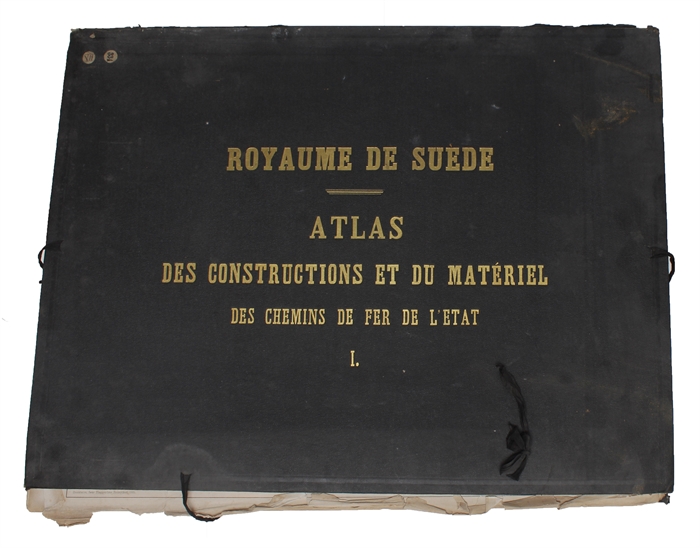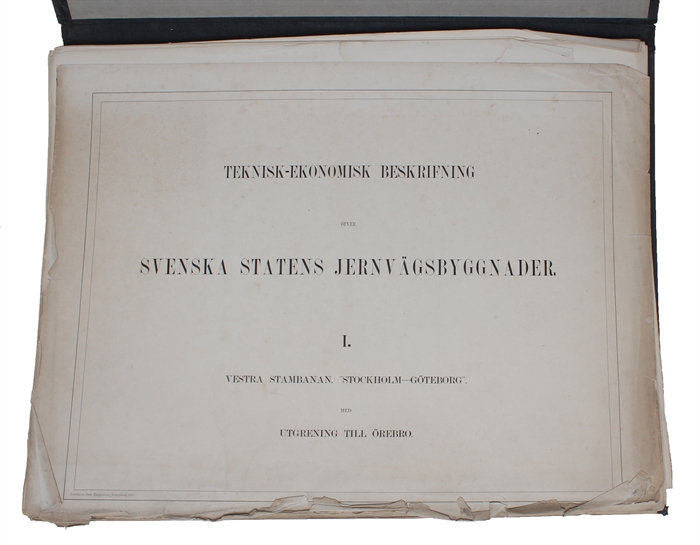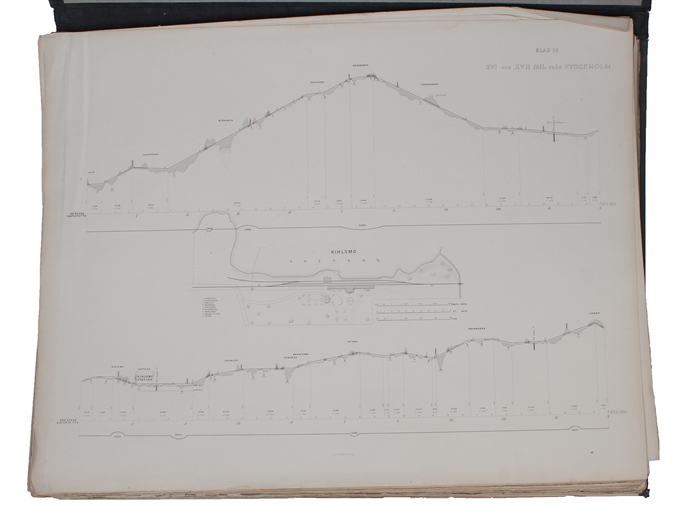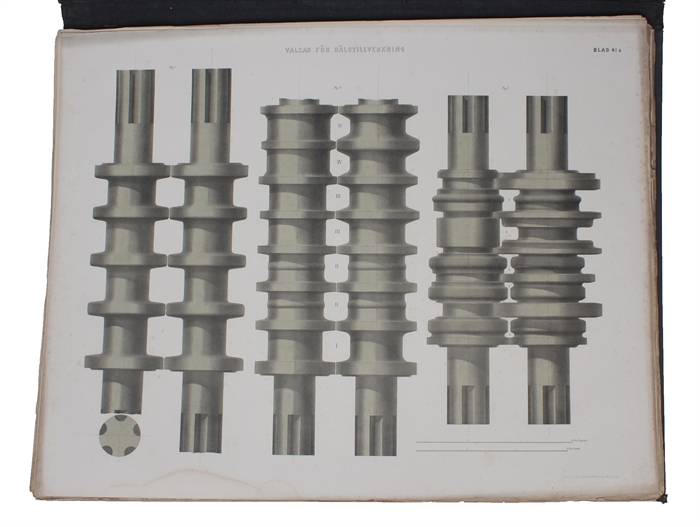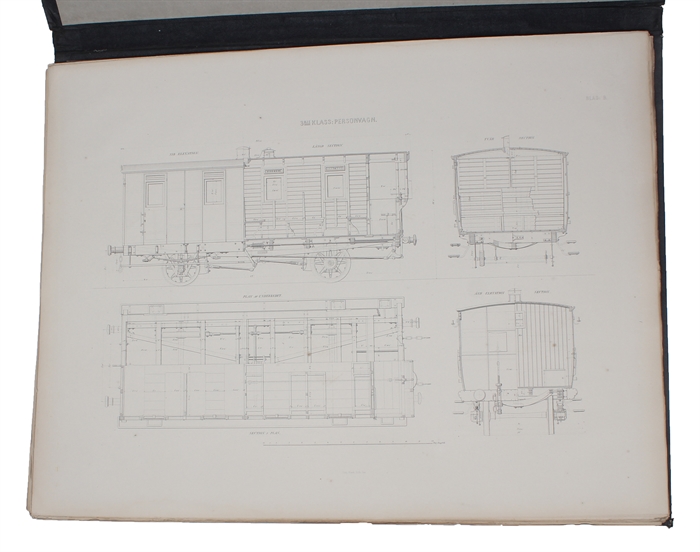SVENSKA JÄRNVÄGER.
Teknisk-Ekonomisk Beskrifning öfver Svenska Statens Järnvägsbygnadar I-II + Tillæg. (I. Vestra Stambanan, "Stockholm-Göteborg", med Utgrening til Örebro. - II. Södra Stambanan: Malmö-Nässjö-Jönköping-Falköping, samt Tillæg: Rörlig Materiel vid Statens Järnvägar). [i.e. Swedish: "Technical-Financial Description of the Swedish State Railway's Buildings"].
Stockholm., 1868-(72).
Atlas alene. Tvær-folio. 3 orig.helshirtmapper. Med 63+28+15 litograferede plancher. (15 plancher med lokomotiver og vogne). Ialt 106 plancher litograferede af Generalstaben, C.G.Höglind,Schlechter & Seedorff. Planchernes størrelse: 44 x 55 cm.
A very rare and fine set of 106 lithographed plates depicting the Swedish trailway buildings and trains. Sweden started building railways comparatively late. Sweden hesitated under heavy debate for several years because of the costs and other issues. Following the parliament's decision in 1854 a colonel of the Navy Mechanical Corps, Nils Ericson, was chosen as the leader for the project of building the main lines (stambanorna).
His proposal was that the line between Gothenburg and Stockholm (Västra Stambanan) should run south of Lake Mälaren to avoid competition with shipping. This was completed in 1862.He also proposed that the line between Malmö and Stockholm (Södra stamabanan) should go to Nässjö and then on to Falköping, where it would meet up with Västra stambanan. There was a decision that, for military reasons, the railways should avoid the coasts as much as possible.
The railway to Falköping was a temporary solution until Östra stambanan between Nässjö and Katrineholm, which lay further up along Västra stambanan, could be built. Nils Ericson's proposal also included the railway between Stockholm and Ånge (Norra stambanan) and Stambanan genom övre Norrland ("the main line through Upper Norrland") which runs between Bräcke and Boden. A railway between Oslo and Laxå (Nordvästra stambanan) was also planned. Laxå lies on Västra stambanan.
The first parts of Västra and Södra stambanan were opened in 1856. In 1862 the whole of Västra stambanan was opened and in 1864 Södra stambanan was opened in its entirety. Nordvästra stambanan was opened in 1871 and Östra stambanan in 1874.
The Norra stambanan opened in 1881and Stambanan genom övre Norrland opened in 1894. A railway called Norrländska tvärbanan between Trondheim and Ånge opened in 1885.
When Ericson resigned in 1862 his authority was divided between two agencies - Byggnadsbyrån (The Building Bureau) and Trafikbyrån (The Traffic Bureau). In 1888 the agencies were combined again as Kungliga Järnvägsstyrelsen (The Royal Railway Committee).
Order-nr.: 6343

